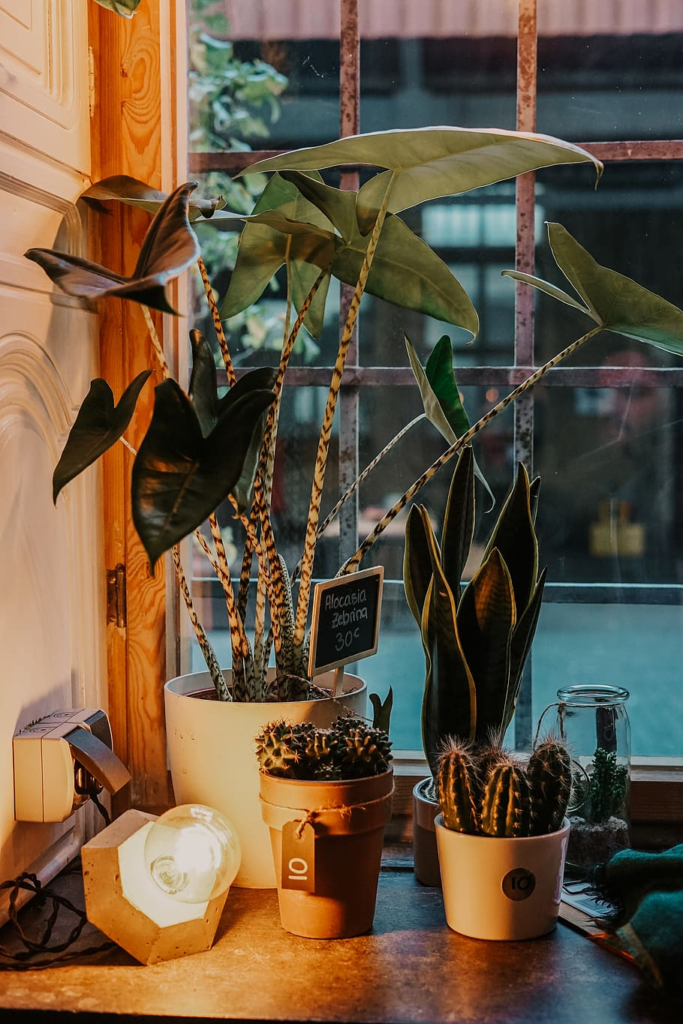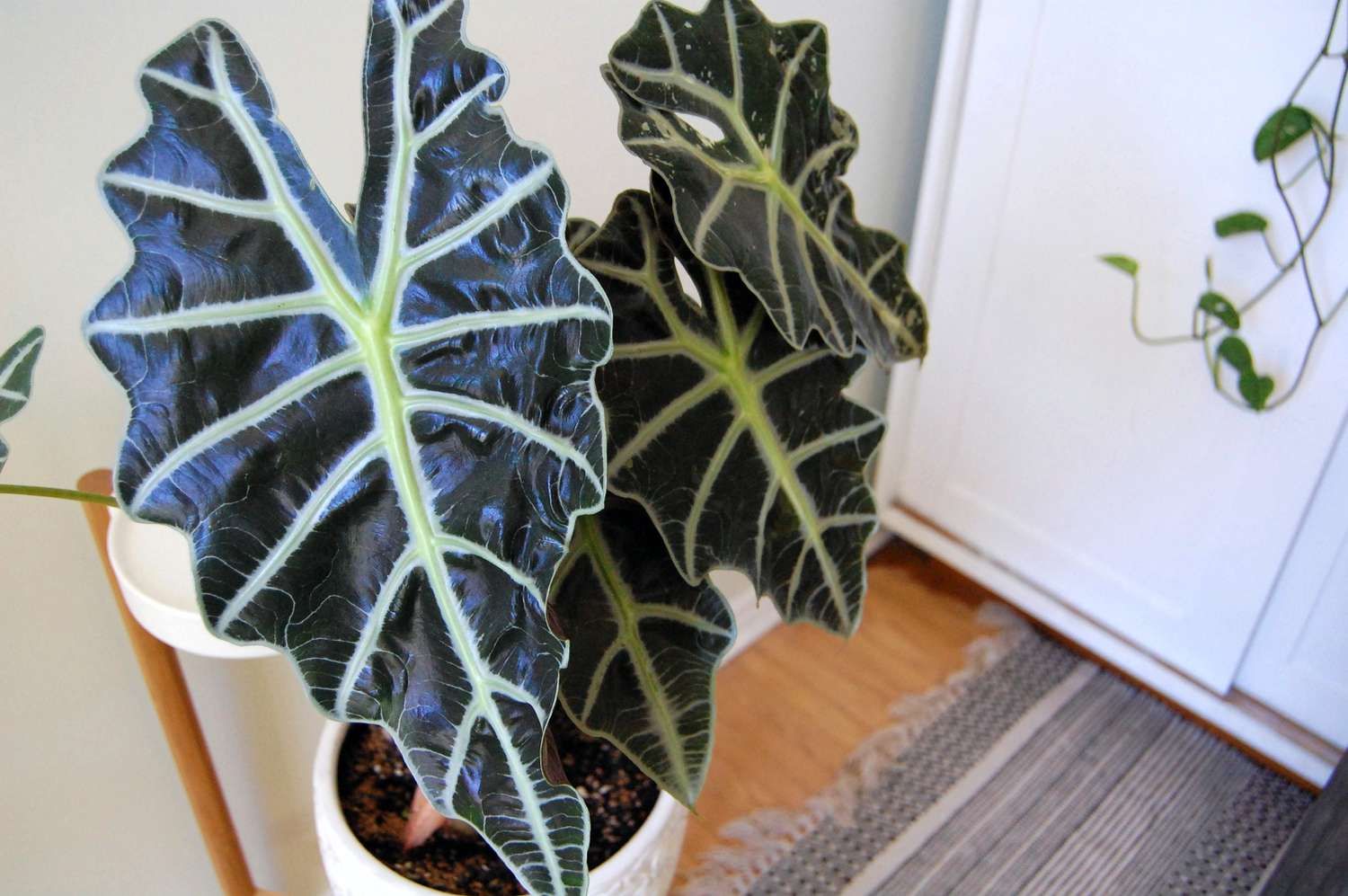Alocasia plants are native to Southeast Asia and belong to the family Araceae. There are over 70 different species of Alocasia, each with its unique leaf shape, size, and color. Some of the most popular Alocasia varieties include Alocasia Amazonica (Polly), Alocasia Macrorrhizos (Giant Taro), and Alocasia Zebrina (Zebra Plant). Regardless of the variety, all Alocasia plants share some common care requirements, which we will discuss in detail below.
Soil and Planting
Alocasia plants prefer well-draining soil that retains some moisture. A good soil mix for Alocasia plants consists of equal parts peat moss, perlite, and potting soil. This mix will provide the necessary nutrients, aeration, and drainage that Alocasia plants need to thrive.
When planting your Alocasia, choose a pot with drainage holes to prevent water from pooling at the bottom. Alocasia plants have a relatively shallow root system, so a wide, shallow pot is ideal. Ensure that the pot is large enough to accommodate the plant’s growth, as a cramped root system can lead to stunted growth and other issues.

Light Requirements
Alocasia plants prefer bright, indirect light. Direct sunlight can scorch their delicate leaves, leading to brown, crispy edges. Place your Alocasia plant near a window with filtered light, or use sheer curtains to diffuse the sunlight. If your space lacks natural light, you can supplement with artificial light sources like fluorescent or LED grow lights.
Watering and Humidity
Alocasia plants require consistent moisture, but they are also susceptible to root rot if overwatered. To strike the right balance, water your Alocasia plant when the top inch of soil feels dry to the touch. Be sure to water thoroughly, allowing the water to drain from the bottom of the pot. Empty the saucer beneath the pot after watering to prevent the plant from sitting in standing water.
Alocasia plants thrive in high humidity environments, so maintaining adequate humidity levels is essential for their health. Aim for a humidity level of at least 50% around your Alocasia plant. You can increase humidity by placing a tray of water with pebbles near the plant, misting the leaves regularly, or using a humidifier.
Fertilizing
Alocasia plants are heavy feeders and require regular fertilization to support their growth. During the growing season (spring and summer), feed your Alocasia plant with a balanced, water-soluble fertilizer every 2-4 weeks. Dilute the fertilizer to half the recommended strength to avoid over-fertilizing, which can lead to leaf burn.
In the fall and winter months, reduce fertilization to once every 6-8 weeks, as the plant’s growth will slow down during this time.
Pruning and Maintenance
Pruning your Alocasia plant is essential for maintaining its health and appearance. Remove any yellowing or damaged leaves by cutting them off at the base of the stem. This will encourage new growth and prevent the plant from wasting energy on unhealthy leaves.
Regularly inspect your Alocasia plant for signs of pests, such as spider mites, mealybugs, and aphids. If you notice any pests, treat the plant with insecticidal soap or neem oil to prevent further infestations.
Propagation
Alocasia plants can be propagated through division or by growing new plants from offsets. To propagate through division, carefully remove the plant from its pot and gently separate the root ball into smaller sections, each with at least one healthy stem and root system. Replant each division into a new pot with fresh soil and care for it as you would a mature Alocasia plant.
To propagate from offsets, wait until the offset has at least 2-3 leaves and a healthy root system. Carefully remove the offset from the mother plant and pot it in a separate container with well-draining soil. Keep the soil consistently moist and provide bright, indirect light to encourage the offset to grow into a healthy, mature plant.
Conclusion
Caring for an Alocasia plant may seem daunting at first, but with a little knowledge and attention to detail, you can enjoy the beauty of this tropical plant in your own home or garden. By providing the right soil, light, water, and humidity conditions, as well as regular fertilization, pruning, and pest control, your Alocasia plant will reward you with stunning foliage and a touch of the exotic. Additionally, propagation techniques like division and growing from offsets allow you to share the beauty of Alocasia plants with friends and family. So, go ahead and bring home an Alocasia plant to add a touch of tropical charm to your space!


Leave a Reply